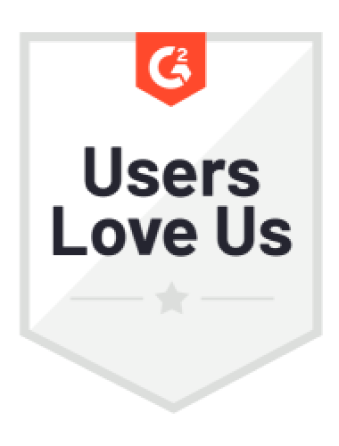How to Manage Data Quality via Frameworks?
Discover effective strategies for ensuring data accuracy and reliability with comprehensive frameworks.

In today's data-driven landscape, maintaining the integrity and quality of data is paramount for organizations aiming to leverage insights and drive decision-making. Data quality frameworks provide structured approaches to manage data quality effectively, ensuring that organizations can trust the information they collect and use. This article explores the importance of data quality, introduces key frameworks, and offers strategies for implementation and ongoing maintenance.
Understanding the Importance of Data Quality
Data quality is an essential aspect of managing information within any organization. Poor data quality can lead to misguided decisions, lost revenue, and damaged reputations. Therefore, it's crucial to understand what data quality entails and the significant implications of neglecting it.
Defining Data Quality
Data quality refers to the reliability, accuracy, and consistency of data throughout its lifecycle. High-quality data meets specific criteria, including completeness, validity, accuracy, timeliness, and relevance to the context in which it is used. These attributes ensure that data serves its intended purpose and upholds the organization’s objectives. Moreover, organizations must continuously monitor and assess their data quality to adapt to changing business environments and technological advancements, which can impact how data is collected, stored, and utilized.
The Impact of Poor Data Quality
Organizations that fail to prioritize data quality can face myriad issues. Consequences of poor data quality include:
- Inaccurate Reporting: Decisions made based on flawed data can lead to costly mistakes.
- Operational Inefficiencies: Time and resources may be wasted on correcting errors caused by poor data quality.
- Compliance Risks: In many industries, regulatory requirements demand stringent data quality practices.
Ultimately, poor data quality undermines trust in data and hampers an organization's ability to function effectively. Additionally, the ripple effects of poor data quality can extend beyond immediate operational challenges; they can damage customer relationships and erode stakeholder confidence. For instance, if a company consistently delivers inaccurate information to its clients, it risks losing credibility and potentially facing legal repercussions. Furthermore, as organizations increasingly rely on data-driven strategies, the importance of maintaining high data quality becomes even more pronounced, as it directly influences competitive advantage and innovation.
Introduction to Data Quality Frameworks
Data quality frameworks are structured methodologies that provide tools and guidance for managing and improving data quality within an organization. By implementing a framework, organizations can better understand their data quality issues and develop a roadmap towards enhancing quality metrics. This is crucial in today's data-driven environment, where the accuracy and reliability of data can significantly impact decision-making processes and overall business performance.
What is a Data Quality Framework?
A data quality framework serves as a blueprint that outlines the processes, roles, and responsibilities for managing data quality. It encompasses policies, procedures, and best practices that guide the collection, processing, storage, and sharing of data across the organization. By clearly defining these elements, organizations can foster a culture of data stewardship, where employees at all levels recognize the importance of maintaining high data quality standards.
Key Components of a Data Quality Framework
The key components of a robust data quality framework include:
- Data Governance: This involves establishing policies and standards for data management.
- Data Quality Assessment: Regular evaluations of data to identify quality issues.
- Data Cleansing: Procedures for correcting or removing inaccurate or irrelevant data.
- Data Monitoring: Continuous oversight to detect and address data quality problems in real-time.
These components work synergistically to create a comprehensive approach to ensuring data quality across all levels of the organization. Additionally, organizations may also consider integrating advanced technologies such as machine learning and artificial intelligence into their frameworks. These technologies can enhance data quality efforts by automating the detection of anomalies and providing predictive insights that help preemptively address potential data issues before they escalate.
Moreover, training and education play a vital role in the successful implementation of a data quality framework. By equipping employees with the necessary skills and knowledge, organizations can ensure that everyone understands their role in maintaining data integrity. Workshops, seminars, and ongoing training programs can help cultivate a workforce that is not only aware of data quality challenges but is also proactive in contributing to solutions, ultimately leading to a more data-centric organizational culture.
Implementing a Data Quality Framework
Successfully implementing a data quality framework requires careful planning and execution. Here are the essential steps that organizations should follow to achieve effective implementation.
Steps to Implement a Data Quality Framework
- Establish Objectives: Define clear, measurable goals for the data quality program.
- Assess Current Data Quality: Identify existing data quality issues through comprehensive audits.
- Develop Policies and Procedures: Create documentation outlining standards for data governance and quality.
- Train Staff: Ensure that all employees understand their roles in maintaining data quality.
- Implement Technology Solutions: Invest in tools that support data quality measures, such as data profiling and cleansing software.
Each step builds on the previous one, forming a solid foundation for ongoing data quality improvements. It is crucial that organizations take the time to communicate these steps effectively across all departments, as collaboration is key to fostering a culture of data quality. Regular workshops and training sessions can help reinforce the importance of these measures, ensuring that data quality becomes a shared responsibility rather than a siloed task.
Overcoming Challenges in Implementation
Implementing a data quality framework is not without its challenges. Organizations may encounter resistance from staff, insufficient knowledge, or lack of resources. To overcome these challenges:
- Ensure executive buy-in and support for the initiative.
- Communicate the benefits of data quality clearly to encourage engagement among staff.
- Utilize phased implementation to address issues gradually, rather than all at once.
Combining these strategies will help mitigate potential roadblocks during the implementation process. Additionally, organizations should consider establishing a feedback loop where employees can voice their concerns and suggestions regarding the data quality framework. This not only empowers staff but also provides valuable insights that can lead to further refinements in the framework. Furthermore, leveraging success stories from early adopters within the organization can serve as powerful motivators, illustrating the tangible benefits of improved data quality in real-world scenarios.
Maintaining Data Quality Over Time
Once a data quality framework is implemented, it must be maintained effectively to ensure ongoing success. This involves regular reviews and continuous education for staff members engaged with data management. Without a proactive approach, even the most robust data quality frameworks can become outdated or ineffective, leading to potential inaccuracies that could impact decision-making processes.
Regular Data Audits and Reviews
Conducting regular audits is crucial to identify new data quality issues that may arise after implementation. Audits provide an opportunity to refine processes, update policies, and ensure adherence to established standards. Key considerations during reviews include:
- Evaluating the accuracy and completeness of data.
- Assessing compliance with data governance policies.
- Integrating feedback from staff to improve the overall framework.
Such reviews foster a culture of accountability and continuous improvement. Additionally, leveraging automated tools for data auditing can significantly enhance efficiency, allowing organizations to detect anomalies and inconsistencies in real-time. By implementing these technologies, teams can focus on strategic initiatives rather than spending excessive time on manual checks, thus optimizing resource allocation.
Training and Education for Data Quality
Ongoing education is vital to maintaining high standards of data quality. Organizations should invest in training programs that equip employees with the knowledge and skills necessary to manage data effectively. Training initiatives might include:
- Workshops on data management best practices.
- Seminars on the importance of data quality for organizational success.
- Online courses that delve into specific data quality technologies and methodologies.
Enhancing staff proficiency will lead to improved data practices and outcomes as a result. Furthermore, creating a mentorship program where experienced data managers can guide newer employees can foster a deeper understanding of data quality principles. This not only strengthens the team's capabilities but also builds a collaborative environment where knowledge sharing becomes the norm, ultimately driving the organization towards greater data integrity and reliability.
Evaluating the Success of Your Data Quality Framework
The ultimate measure of a data quality framework's effectiveness lies in its outcomes. Evaluating the success of your framework involves analyzing key performance indicators that reflect the quality and management of data.
Key Performance Indicators for Data Quality
Identifying and tracking KPIs will help organizations gauge the health of their data quality initiatives. Essential KPIs might include:
- Data Accuracy Rate: The percentage of accurate records compared to the total dataset.
- Data Completeness Rate: The measure of filled versus empty fields within the data.
- Data Timeliness: An assessment of how quickly data is updated or refreshed.
- User Satisfaction: Survey feedback from data users regarding their trust in data quality.
Consistent monitoring of these indicators provides insights for improvement.
Continuous Improvement of Your Framework
Finally, a successful data quality framework must evolve in response to changing organizational needs and emerging technologies. Continuous improvement involves:
- Reviewing and adjusting policies and procedures based on assessment results.
- Encouraging innovation in data management practices.
- Staying informed about new tools and techniques for data quality enhancement.
Adopting a mindset of continual evolution will ensure that data quality remains a priority for organizations moving forward.
In conclusion, managing data quality via frameworks is not only a necessity but a strategic advantage for organizations. By understanding the importance of data quality, adopting a relevant framework, and committing to continual improvement, organizations build a robust foundation for success in the data age.
Ready to elevate your organization's data quality and governance to the next level? CastorDoc is your solution. With its advanced governance, cataloging, and lineage capabilities, paired with a user-friendly AI assistant, CastorDoc is the powerful tool your business needs for enabling self-service analytics and ensuring data integrity. Experience the ease of managing data quality, compliance, and catalogs through a conversational interface, and empower your business users with the ability to find and utilize data confidently. Try CastorDoc today and unlock the full potential of your data, driving informed decision-making across your enterprise.
You might also like
Get in Touch to Learn More



“[I like] The easy to use interface and the speed of finding the relevant assets that you're looking for in your database. I also really enjoy the score given to each table, [which] lets you prioritize the results of your queries by how often certain data is used.” - Michal P., Head of Data




.png)
%202.png)

%202.png)

%202.png)
%202.png)
%202.png)

%202.png)


%202.png)

%202.png)


.png)

